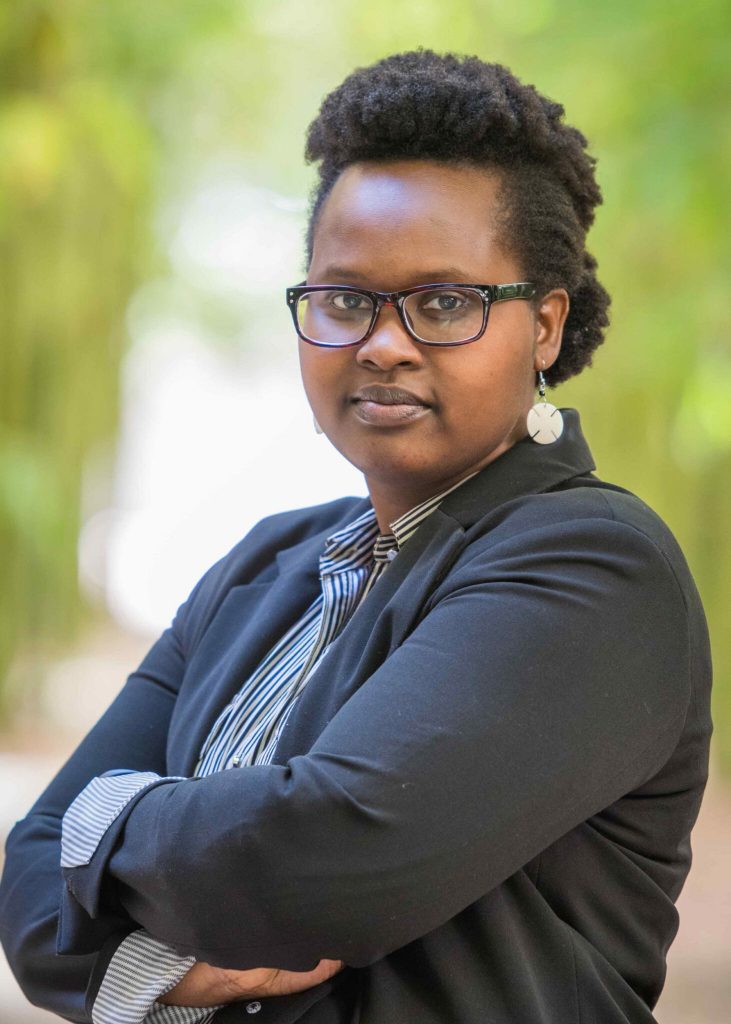Growing up in Bujumbura, Burundi, Mireille Kamariza didn’t know any astronomers, or any scientists at all for that matter. But she adored planets anyway. At the start of every school year, she and her fellow students would wrap up their notebooks to protect them from wear. And every year, Kamariza hunted her town for magazines with glossy pictures of planets, astronauts, and “any news about astronomy.” Between classes, she stared at those astronomical covers like they were portals to a fantastical world.

The Junior Fellow never ended up floating among the stars, at least not in a literal sense. This August, Chemical & Engineering News named her one of its Talented 12 for her invention of a quick, low-cost test to detect tuberculosis. In 2017, Fortune magazine named her one of the World’s Most Powerful Women while she was still a graduate student. In 2018, she earned an even rarer title: co-founder of a company in the male-dominated biotech industry. In a way, the world she now inhabits — that of an award-winning scientist, Silicon Valley biotech entrepreneur, degree recipient from the University of California, Berkeley, and Stanford University — was a fantastical world, at least to that young girl in Burundi who got lost in pictures of Mars and Venus.
“It feels like a different life,” Kamariza said, “It’s nothing short of a miracle that I’m one of the few that was able to make that jump.”
After achieving the fantastical, Kamariza is tackling a very real problem: Throughout the developing world, including Burundi, tuberculosis is one of the top causes of death. In 2018, the disease killed 1.5 million worldwide, far more than even AIDS. Though testing and treatment are on the rise, low-income, rural populations still struggle to detect and contain the disease (especially now that COVID-19 diagnostics are prioritized over every other infectious disease). Each year, about 10 million people develop tuberculosis and about 3 million go undetected, Kamariza said. Her invention — a portable diagnostic tool — could help identify more cases faster, anywhere in the world, to prevent further spread, get treatment to those in need, and even monitor the effectiveness of that treatment. “A lot of people doing TB work were rewired to do COVID work. TB patients are being left behind.” — Mireille Kamariza, Junior Fellow
When Kamariza arrived in the U.S., settling in San Diego at age 17, science was still an alien thing. She spoke French but little English (she watched “Star Wars” and “Star Trek” to learn more); she shared a studio apartment with her two older brothers and worked part-time at Safeway while taking classes full-time at San Diego Mesa College. There, she left her love of planets behind: “How many astronauts do you know that started at a community college?” she said.
By chance, she enrolled in a chemistry course with Professor Saloua Saidane, who happened to speak French. She guided Kamariza over the language barrier before pushing her to transfer to the University of California, San Diego. Kamariza needed the encouragement: Other mentors told her, bluntly, that her English and G.P.A. were too poor for her to make it to UCSD. They were wrong.
Once at UCSD, Kamariza again doubted her ability to make it to graduate school. But Tracy Johnson — another chemist and the first Black woman scientist Kamariza encountered — pushed her to apply to the University of California, Berkeley. “I would never make it to UC Berkeley in a million years!” Kamariza said to Johnson. “Look at all the people who make it in. How many are African immigrants?”
Kamariza often credits external interventions like miracles, luck, and mentors for her success. “For immigrants, for people who come from backgrounds that are traditionally underserved,” she said, “it’s all about opportunities and it’s about who can open the door for you.” Still, though Johnson showed her the door, Kamariza knocked. To her surprise (but not Johnson’s), she got in.
At Berkeley, Kamariza joined Carolyn Bertozzi’s chemical biology lab. There, and continuing at Stanford University, she combined her knowledge of chemistry and molecular biology to eventually invent her tuberculosis diagnostic. Her test turned what used to be an 11-step process into one simple step. “Because it’s stable and because it doesn’t require a fridge to work,” Kamariza said, “you could in principle do this experiment anywhere. You could be in the tundra of Alaska or the desert of Namibia and do it.” MORE
